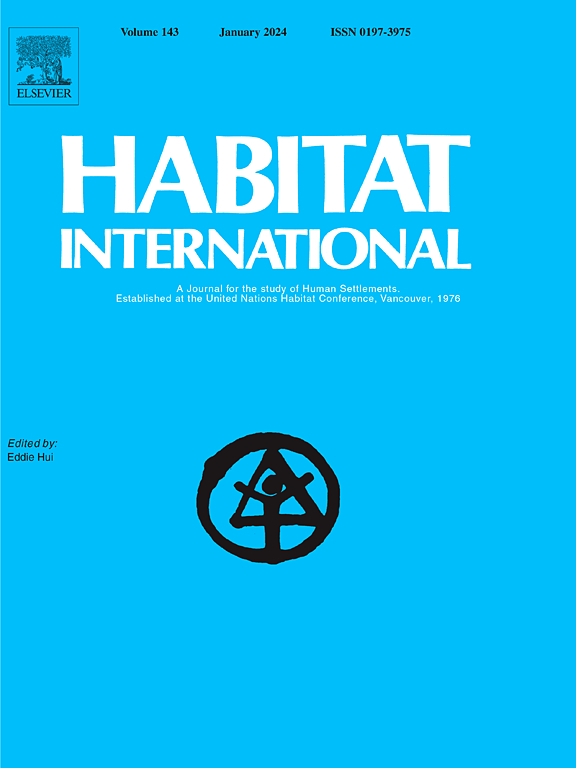Changes in visitor behaviour across COVID-19 pandemic: Unveiling urban visitation dynamics and non-linear relationships with the built environment using mobile big data
IF 6.5
1区 经济学
Q1 DEVELOPMENT STUDIES
引用次数: 0
Abstract
COVID-19 has significantly affected the behavioural patterns of urban visitors. However, the non-linear relationships between visitor behaviour and built environments, particularly how these relationships have evolved during the pandemic, have not yet been extensively studied. Using over 10 million mobile big data records collected over three years in Fukuoka, Japan, incorporating the XGBoost machine learning model and SHAP-PDP interpretation method, we identified non-linear relationships between visitor behaviours and built environments. Our findings uncovered significant non-linear impacts on visitor behaviour of several urban characteristics, such as floor area ratio, building coverage ratio, road density, and POI richness. Notably, the floor area ratio exhibits a negative correlation with visit frequency below 1 but a positive correlation above 2. Building coverage ratio positively impacts visit frequency up to 1000 m2 per 10,000 m2, after which it turns negative; this correlation shifted towards a consistent negative trend during the pandemic. Road density, which usually correlates negatively with visit duration, became positively correlated above 700 m2 per 10,000 m2 during the pandemic. Similarly, the influence of floor area ratio on visit duration reversed from negative to positive under pandemic conditions. Revealing the dynamic and non-monotonic nature of how urban visitors respond to the built environment under the influence of the pandemic, our results provide valuable insights for urban planning strategies in response to crisis resiliently.
COVID-19大流行期间游客行为的变化:利用移动大数据揭示城市参观动态以及与建筑环境的非线性关系
COVID-19 严重影响了城市游客的行为模式。然而,游客行为与建筑环境之间的非线性关系,尤其是这些关系在大流行期间是如何演变的,尚未得到广泛研究。我们利用三年来在日本福冈收集的 1,000 多万条移动大数据记录,结合 XGBoost 机器学习模型和 SHAP-PDP 解释方法,确定了游客行为与建筑环境之间的非线性关系。我们的研究结果发现了一些城市特征对游客行为的重大非线性影响,如容积率、建筑覆盖率、道路密度和 POI 丰富度。值得注意的是,容积率在 1 以下时与游客访问频率呈负相关,而在 2 以上时则呈正相关。建筑覆盖率在 1000 平方米/10000 平方米以内对访问频率有正向影响,之后则转为负向影响;在大流行期间,这种相关性转为持续的负向趋势。道路密度通常与访问持续时间呈负相关,但在大流行病期间,超过每万平方米 700 平方米的道路密度与访问持续时间呈正相关。同样,在大流行病条件下,容积率对访问持续时间的影响也由负转正。我们的研究结果揭示了大流行病影响下城市游客对建筑环境反应的动态性和非单调性,为城市规划战略提供了有价值的见解,以应对危机的复原力。
本文章由计算机程序翻译,如有差异,请以英文原文为准。
求助全文
约1分钟内获得全文
求助全文
来源期刊

Habitat International
Multiple-
CiteScore
10.50
自引率
10.30%
发文量
151
审稿时长
38 days
期刊介绍:
Habitat International is dedicated to the study of urban and rural human settlements: their planning, design, production and management. Its main focus is on urbanisation in its broadest sense in the developing world. However, increasingly the interrelationships and linkages between cities and towns in the developing and developed worlds are becoming apparent and solutions to the problems that result are urgently required. The economic, social, technological and political systems of the world are intertwined and changes in one region almost always affect other regions.
 求助内容:
求助内容: 应助结果提醒方式:
应助结果提醒方式:


